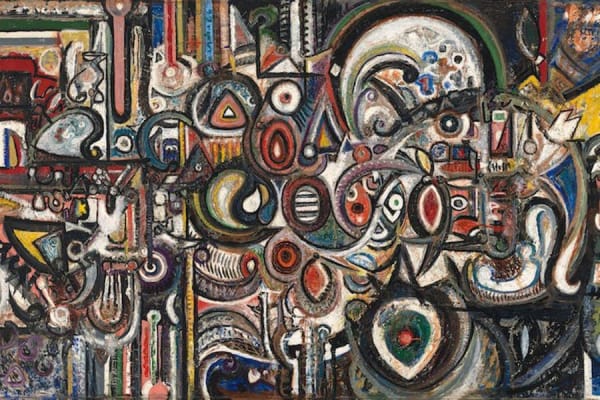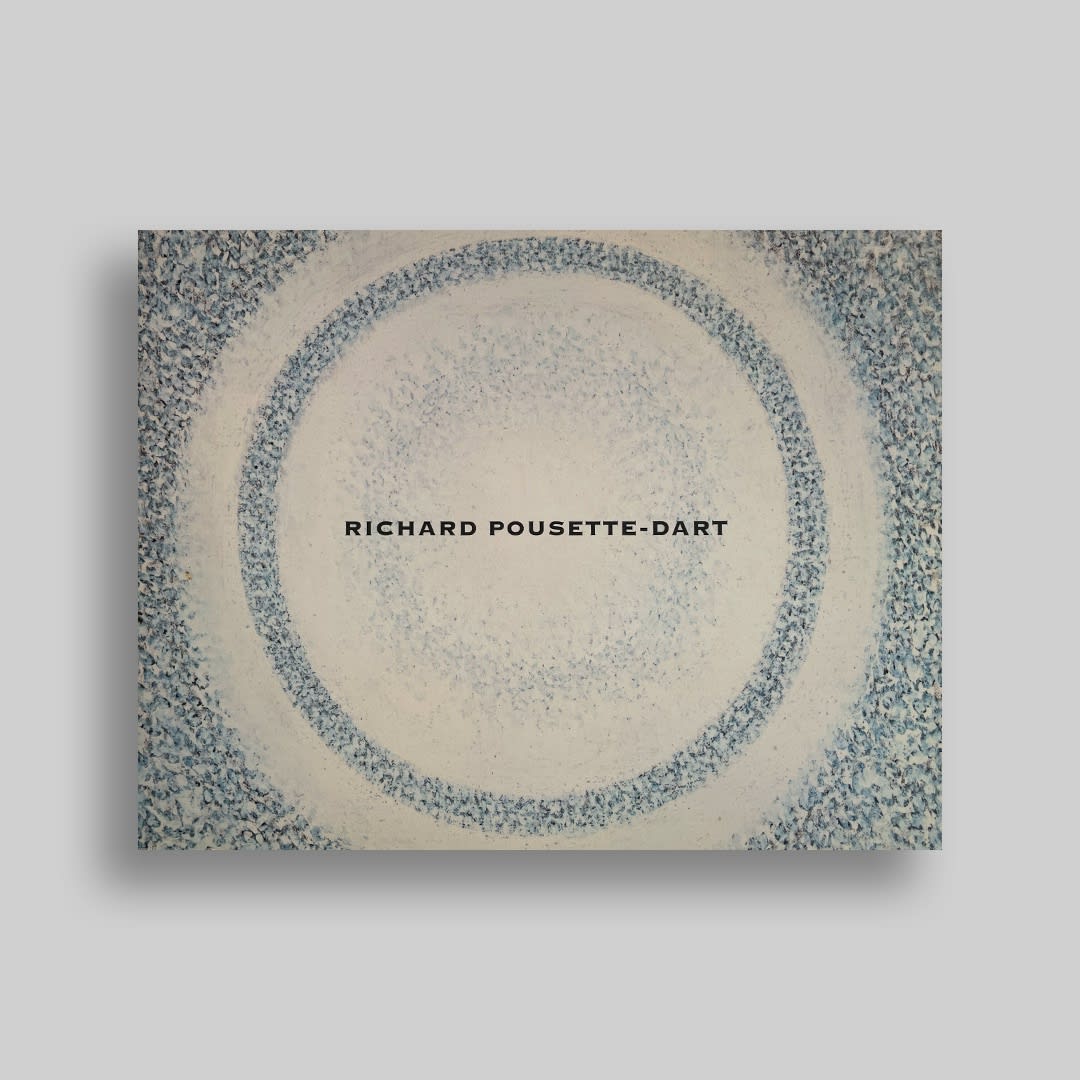Richard Pousette-Dart 1916-1992
“I really am not interested in abstract art. I'm interested in anything that is wonderful, that is a miracle to me, that is alive."
Richard Pousette-Dart was the youngest artist of the New York School’s first generation of Abstract Expressionists. During his career, Pousette-Dart created a lexicon of biomorphic and totemic forms that provided rich visual and symbolic sources that he would explore throughout his long career in a multitude of painterly approaches.
He is recognized for his painting, drawing, photography, and sculpture, which are unified by his expressive use of gesture, form, and color. Never embracing action painting and instead pursuing his own aesthetic, Pousette-Dart sought universal significance in his art, expressed through nonobjective means.
Deeply influenced by Native American art and textiles, Pousette-Dart distanced himself from his contemporaries with an interest in spirituality, his paintings dealing with traditional dualities between light and substance, spirit and body, and harmony and discord. He favored heavy layers of acrylic and oils with small, thick brushstrokes to emphasize luminosity and distinctive colors.
His work has been the subject of solo exhibitions at the Whitney Museum of American Art (1963, 1974, 1998); Museum of Modern Art (1969); The Metropolitan Museum of Art (1997); and Solomon R. Guggenheim Museum as well as the Peggy Guggenheim Collection in Venice, Italy (2007). Recent monographic presentations have been held at the Philadelphia Museum of Art (2014); The Drawing Center, New York (2015); Kettle’s Yard, University of Cambridge, United Kingdom (2018); and Bowdoin College Museum of Art, Brunswick, Maine (2018).
Born in Minnesota, to a musician-poet mother and an artist-writer father, Richard Pousette-Dart began to paint from the early age of 8. He spent his childhood in Valhalla, New York, and then briefly attended Bard College in the Hudson River Valley, New York, in 1936. When he was 20 years old, Pousette-Dart moved to New York to pursue a career as an artist. Just one year later, in 1937, he became an assistant to Art Deco sculptor Paul Manship and subsequently worked as a secretary in Lynn Morgan's photography studio until 1939. The latter appointment instilled a passion for photography that would remain with the artist even after he chose painting as his primary medium.
In 1941 the Artists' Gallery, New York, hosted Poussette-Dart's first solo exhibition, and soon after he was showing his work at many of the galleries that supported the first generation of Abstract Expressionists. He was included in the inaugural Forty American Moderns exhibition at Howard Putzel's 67 Gallery in 1944 and had solo shows at Peggy Guggenheim's gallery-museum Art of This Century in 1947 and Betty Parsons Gallery the following year. Pousette-Dart quarried many of the same sources, including Surrealism and Jungian psychology, as his fellow Abstract Expressionist painters, and his early efforts are similarly indebted to the work of Pablo Picasso and the art of non-Western cultures in their use of totemic forms, emphatic color, and pronounced gestural brushwork. Although he appeared with some of the major figures of the movement—including Barnett Newman, Jackson Pollock, and Clyfford Still, in a now-famous 1951 Life magazine photograph that labeled the group the "Irascibles"—Pousette-Dart usually preferred to work in solitude, without public attention. He resided outside New York, first in Sloatsburg, New York, from 1951, and then in Suffern, New York, from 1958, which further contributed to this widespread perception of his independence from his colleagues. His move to the country also reflects the influence of Eastern philosophy and American transcendentalism on his artistic practice.
Pousette-Dart was continually invested in the formal nature of his medium, and in the early 1950s he made a series of paintings using a variety of white paints, primarily titanium and permalba, reworking old canvases and thinly painting on top of previous impasto. He also began to create abstract works in bright colors and reduced, geometric forms that have been likened to mosaics. His early work, often marked by black contour lines and mythical subject matter, evolved to become increasingly light in tone and more focused on spiritual ideals. From the 1960s he developed a dotted, almost pointillist style to create works dedicated to the exploration of color, texture, and form. He pursued these foundational concerns in his later work, creating into his eighth decade works that conveyed a harmony of universal forms.
From 1949 to 1972, Pousette-Dart regularly showed work in the Whitney Annuals (later Biennials), and the Whitney Museum of American Art, New York, also held his first major retrospective (1963) and two subsequent solo exhibitions (1974, 1998). Additional solo shows were presented by the Museum of Modern Art, New York (1969–70); Indianapolis Museum of Art (1990); and Metropolitan Museum of Art, New York (1997). His work also was the subject of a traveling exhibition held at the Peggy Guggenheim Collection, Venice; Guggenheim Museum, New York; and Galleria Gottardo, Lugano, Switzerland (2007). Pousette-Dart died in New York on October25, 1992.
-

RICHARD POUSETTE-DART
Beginnings — Kettle’s Yard, University of Cambridge 23 Oct 2018 - 6 Jan 2019Read more -

Richard Pousette-Dart
Full Circle: Works on Paper — Philadelphia Museum of Art 13 Sep - 30 Nov 2014Full Circle surveys the long and extremely prolific career of one of the twentieth century’s most creative draftsmen, Richard Pousette-Dart (American, 1916–1992). Focused on his works on paper, the exhibition...Read more




